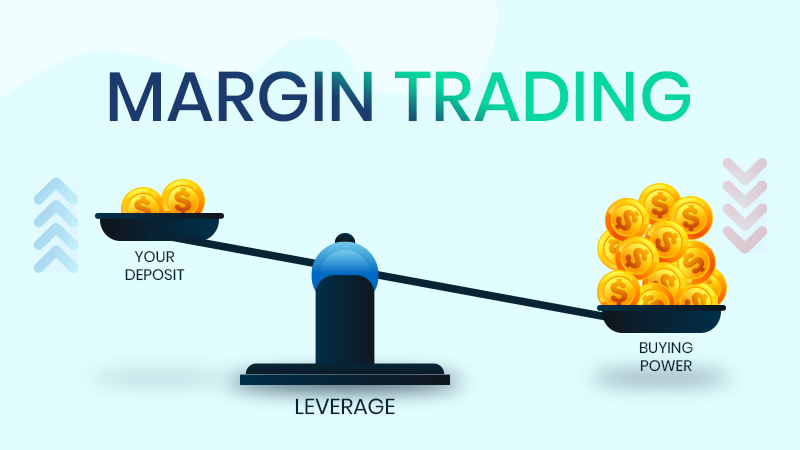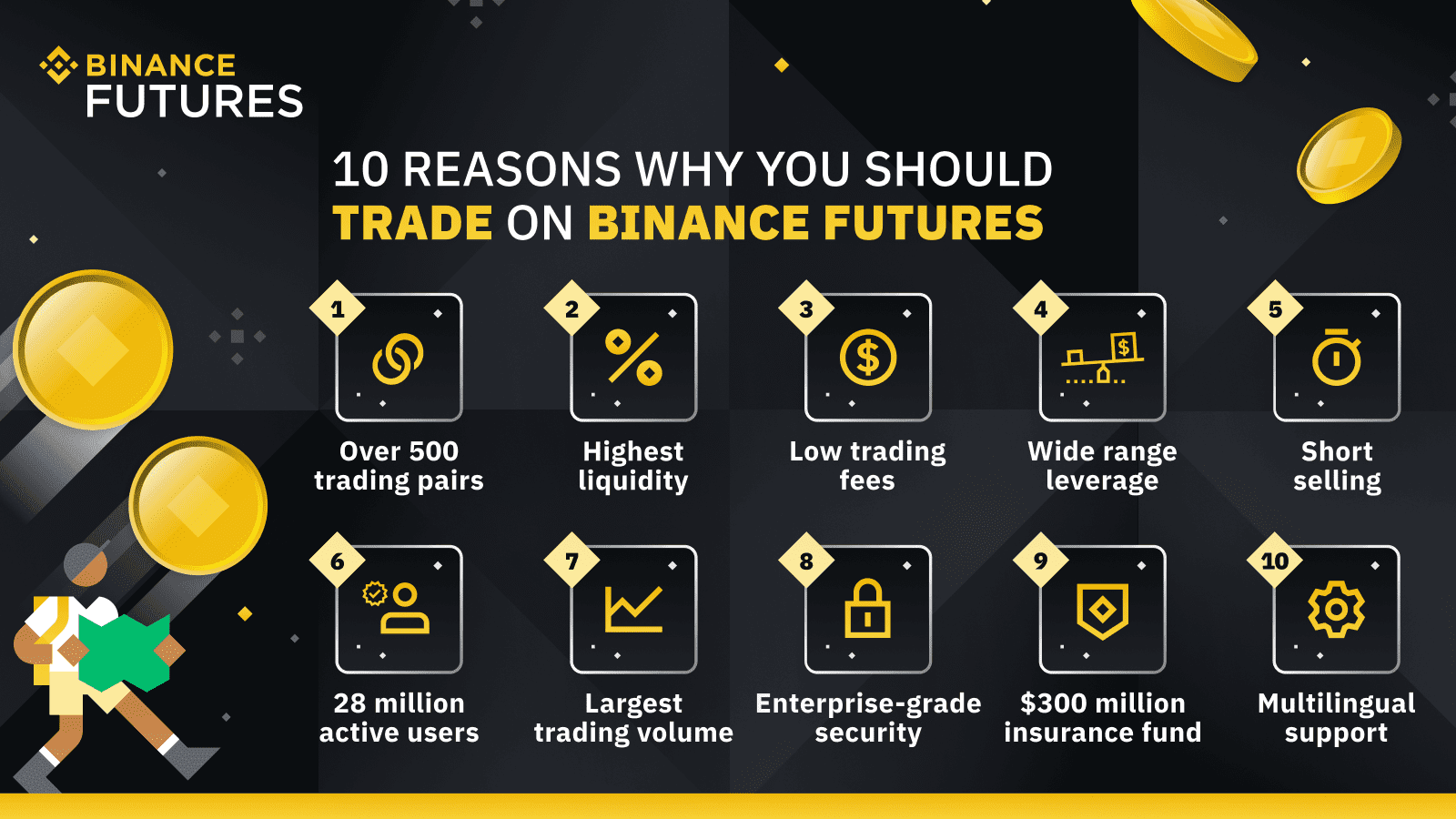This is a quick warning for those who have just recently entered the crypto world! The cryptocurrency market is very volatile, and before entering into any crypto trade or buying or holding crypto assets, you must know that there are different types of risks associated with cryptocurrency you should know about.
Moving on from this information, while buying and holding crypto has its potential and rewards along with its inherent risks, you can invest in cryptocurrency in multiple ways. One of the majorly used alternatives is crypto futures. The question is, what are crypto futures, and how do we use them in crypto trading?
What are Crypto Futures?

Now, to answer the question of “What Are Crypto Futures?” they are financial contracts that bind two parties in an agreement on the future price of a specific cryptocurrency at a predetermined date.
In other words, they are a prediction or a bet (to use the more common terminology) between two parties, with the one who is making the speculation regarding the future price of a specific token going up (in other words, going long) and the other who is believing the price will go down (in other words going short).
Like any other bet, the person who makes the correct prediction wins a reward, and the loser loses money. We will discuss later how crypto futures work and what the dynamics behind them are.
Unlike buying and holding actual coins, crypto futures don’t involve directly owning the underlying cryptocurrency. Instead, they represent an agreement on its future value.
How do Crypto Futures work?

Now that we have a basic understanding of crypto futures let’s take a closer look at what mechanics are involved in the process that drives them.
Crypto futures operate as derivative contracts, fundamentally deriving their value from a specific cryptocurrency, essentially residing in financial instruments tied to the underlying asset.
Let’s consider Bitcoin futures as an example. In crypto futures, an investor may enter into a derivative contract speculating that the future price of Bitcoin will reach $100,000 on 30 June 2024. The other party will present a contradiction that the price of Bitcoin will get to this level after the agreed date.
The value of this futures contract is derived from the actual price movements of Bitcoin. If, at the agreed-upon future date, the actual price of Bitcoin is higher than the contracted price, the investor makes a profit; if it’s lower, they incur a loss.
Essentially, the value of the futures contract is directly tied to the performance of the underlying cryptocurrency, Bitcoin, in this case.
So, the mechanics or components that are involved in crypto futures include:
- Choosing an underlying asset, in this case, Bitcoin.
- Deciding an expiration date, which is 30 June 2024, in this scenario.
- Setting up the contract size and the amount of cryptocurrency in the deal, like betting on 1 Bitcoin’s future.
- Agree on a settlement price, the underlying asset’s price at expiration. The settlement price will determine who has won or lost the bet.
We are now coming back to the prediction part. If one party believes that the price of a crypto asset is heading upward and he made a bet against it, the party is essentially going long in crypto terms. Conversely, if the party believes that the price of the underlying crypto asset is heading downward in the future, it is going short. Going long means the party shows bullish sentiment while going short shows bearish sentiment.
At the contract’s expiration date, the final price of the underlying asset is compared to the initial contract price. The comparison determines who won the bet and by how much.
The party who correctly predicted the price movement receives a payout from the other party, proportional to the difference between the initial and final prices and the contract size.
Crypto futures are tools for speculating on future price movements, allowing participants to profit from rising and falling markets without directly owning the underlying asset.
Margin Calls: Understanding Crypto Leverage

Leverage in crypto futures amplifies the potential gain or loss on your position by allowing you to control a more considerable notional value of the underlying asset with a relatively more minor initial investment, known as margin.
If your prediction about the asset’s price movement is correct, your profits can be significantly multiplied compared to simply buying or selling the asset directly.
However, the flip side is precarious as well, which is that if your prediction is wrong, your losses can be magnified proportionally, potentially exceeding your initial margin and leading to substantial financial repercussions or, in simpler words, losing all your investment amount if you are, not careful about the amount of leverage you have chosen.
Let’s look at an example to help you understand the scenario where leverage is used in crypto futures.
Contract Size: 1 Bitcoin futures contract (equivalent to $47,000 at current market price).
Margin Requirement: 10% (meaning you deposit $4700 initially).
Leverage: 10x (your position controls $47,000 worth of Bitcoin futures with just $4700).
Now, imagine two scenarios:
Scenario 1: Bullish Prediction – Going Long.
Bitcoin price at contract initiation: $47,000.
Bitcoin price at expiration: $55,000 (your prediction was correct).
Profit: $8,000 (price difference multiplied by contract size).
Return on Investment (ROI): 170.2%.
Return on Investment is calculated using the formula: ROI = (Profit/Initial Investment) × 100.
In this scenario, leverage magnified your initial $4700 investment by 1.702 times, translating into a substantial return.
Now, let’s look at the opposite scenario where you are predicting Bitcoin prices to decrease in the future.
Scenario 2: Bearish Prediction – Going Short
Bitcoin price at contract initiation: $47,000
Bitcoin price at expiration: $40,000 (your prediction was correct)
Profit: $7,000 (price difference multiplied by contract size)
Return on Investment (ROI): 148.94% (profit divided by initial margin)
So far, we have only covered the scenario where you are standing at a winning position in both scenarios. But another question arises: what would have happened if your predictions proved wrong in both cases? What would have happened then?
It is imperative to understand that leverage trading works both ways. A correct prediction would yield you good profits, but a wrong prediction would amplify your losses similarly.
Therefore, you have to be very careful when selecting the amount of leverage you want to play with, especially given the highly volatile nature of the crypto market; a move in the opposite direction of your prediction can sometimes be so swift that you won’t be able to mitigate your losses or exit from it.
The exchange will issue a margin call if the price movement goes against your position and causes your margin to fall below a certain threshold. It requires you to deposit additional funds to maintain your position or face forced liquidation, meaning automatic selling of your contract to offset the loss.
Managing leverage effectively requires a deep understanding of risk management, technical analysis, and emotional discipline. While it can be a powerful tool to amplify your profits, it’s crucial to approach it with caution and adequate knowledge.
Don’t stick to trading just Bitcoin.
We have explained how crypto futures work using the example of Bitcoin. However, it doesn’t mean you are limited to using Bitcoin for Crypto futures.
Trading Altcoins in the crypto future is also an option for you. Altcoin futures trading offers diversification benefits, enabling risk spread across various cryptocurrencies.
While it increases leverage and exposure to emerging projects, caution is necessary due to higher volatility, lower liquidity, and limited market data.
Maintain a balanced portfolio by allocating a smaller portion to altcoin futures than established assets like Bitcoin.
Trading on Crypto Exchanges

The information we have covered thus far gives us a good understanding of the theory of what crypto futures are. Where should you go if you want to implement this in practice? The answer is opting for a cryptocurrency exchange, as these platforms allow you to test your crypto knowledge and skills along with a bit of luck.
These platforms bring contracts to life, offering a variety of functionalities and order types that set the stage for your trading journey. Numerous exchanges provide futures trading, each with unique features, fees, and trading volumes.
Factors like reputation, security measures, supported cryptocurrencies, liquidity, fees, user interface, and features should be considered when choosing an exchange. It would help to opt for established platforms with proven track records to ensure a secure trading environment.
Once you’ve selected an exchange, understanding order types becomes crucial.
Limit orders allow you to define the price you want to buy or sell your futures contract, providing greater control but potentially delaying execution.
On the other hand, market orders enable immediate execution at the best available market price, relinquishing control over the exact price.
Implement stop-loss orders to automatically sell your contract if the price reaches a predetermined level, limiting potential losses. Alternatively, use take-profit orders to sell your contract for a desired profit target automatically.
Mastering the tools and mechanisms is essential in the dynamic world of crypto futures exchanges. Trading fees vary across platforms, including transaction, maker/taker, and potential storage fees.
You should consider these factors, especially if you are new to crypto trading because many amateur traders don’t believe how much a platform will charge for trading futures contracts. Sometimes, the amount they pay in fees aligns differently with how much they are willing to spend, and they blame the exchanges for charging more than they should have.
To save yourself from such troubles, go through the exchange’s fee rates, as every exchange has made this information public, and you can select the exchange that meets your criteria of how much you are willing to pay in trading fees.
Additionally, be aware of funding rates, representing the cost of holding a leveraged position, which can be positive or negative based on market demand for the underlying cryptocurrency. Traders receive or pay these rates daily depending on their position (long or short).
Is Cheaper Always Better?
While some platforms may charge higher fees, they often provide increased liquidity, advanced trading features, enhanced security measures, reliable customer support, regulatory compliance, system stability, and educational resources.
We emphasize that your decision shouldn’t be based only on fee structure and that you must also think beyond that.
Traders must assess the overall trading environment, including the platform’s security, features, customer support, and market analysis tools.
Opting for slightly higher fees might be justified by the added advantages of catering to experienced traders and those prioritizing advanced features and a secure trading environment.
Risks and Rewards of Crypto Futures

We have arrived at one of the most essential parts of the topic, which is the risks and rewards associated with crypto futures:
Risks
- The volatile nature of cryptocurrency markets poses a constant threat, swiftly turning potential profits into substantial losses, particularly with leverage amplifying market movements.
- Crypto futures expose traders to the risk of margin calls, triggering forced position closures if the margin falls below a critical threshold, potentially resulting in losses exceeding the initial Investment.
- Emotional resilience is crucial, as market volatility and potential rapid losses can induce stress, anxiety, and impulsive decision-making.
- Successful navigation in crypto futures demands technical analysis skills, disciplined risk management, and a profound understanding of market dynamics.
Rewards
- Crypto futures, fueled by leverage, present the exciting potential to magnify gains, allowing traders to profit from upward and downward market movements.
- Trading crypto futures provides a pathway for diversification, reducing vulnerability to individual asset fluctuations by incorporating altcoins into your portfolio.
- Despite the challenges, skilled traders and fortunate speculators can reap substantial returns by accurately predicting price movements.
- Participating in the dynamic realm of crypto futures empowers individuals to explore diverse opportunities within the ever-evolving landscape of digital assets.
Final Thoughts
Crypto Futures provides a different avenue to explore the world of crypto trading without holding the crypto asset.
The benefit of crypto futures is that they allow you to earn more profits by predicting the price change of the underlying asset. At the same time, the risks involve losing more than you bargained for if you are using leverage and the market moves against your prediction.
It all comes down to your risk appetite, how much of an experienced trader you are, and which different technical analysis techniques you have a grasp on.
Note: The purpose of this article is to help you learn about what Crypto Future contracts are. The article is written for educational purposes and shouldn’t be taken as investment advice. Cryptocurrency investment is risky, and you should do your due diligence and research before jumping into the dynamic world of cryptocurrency.




